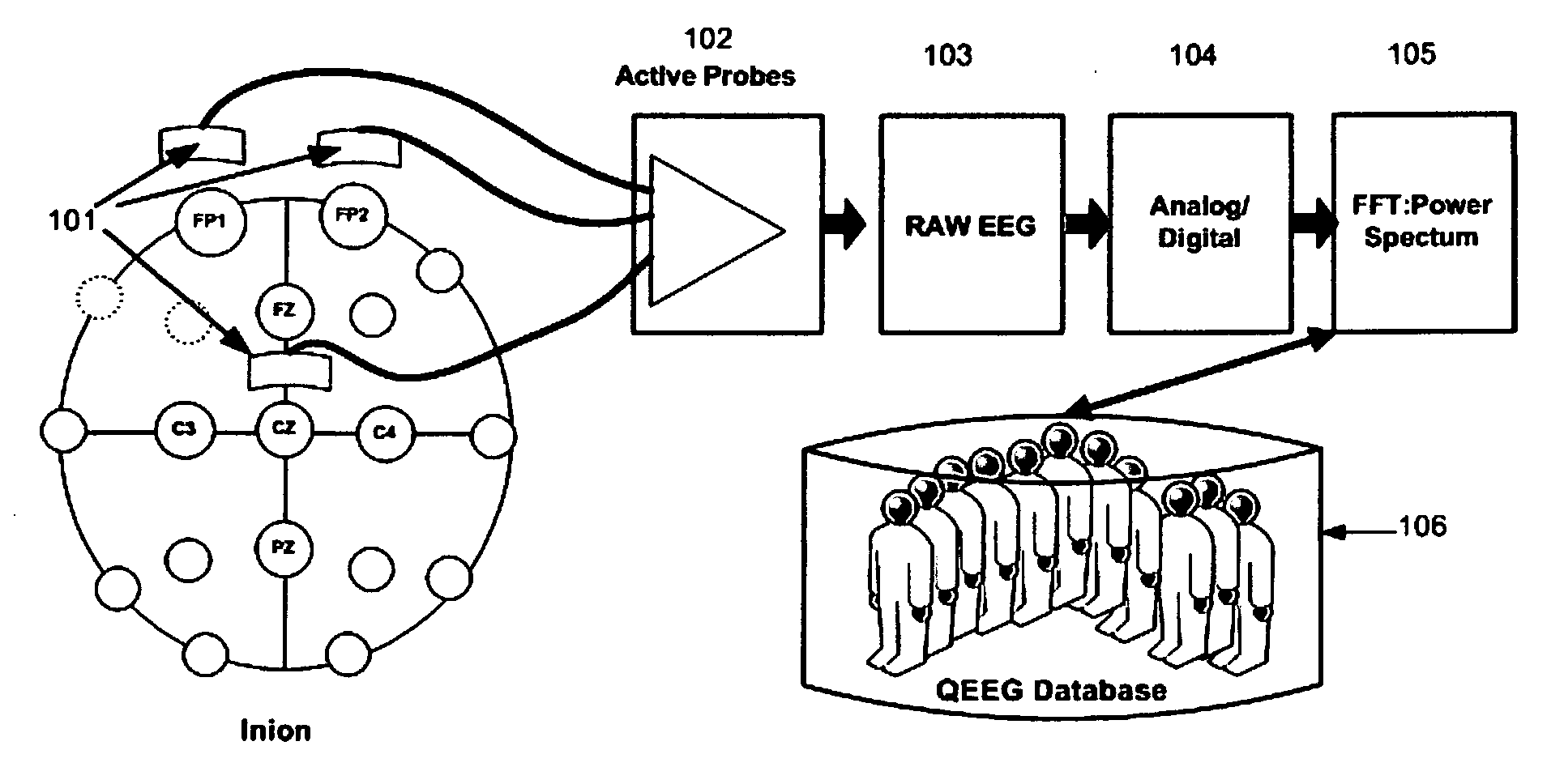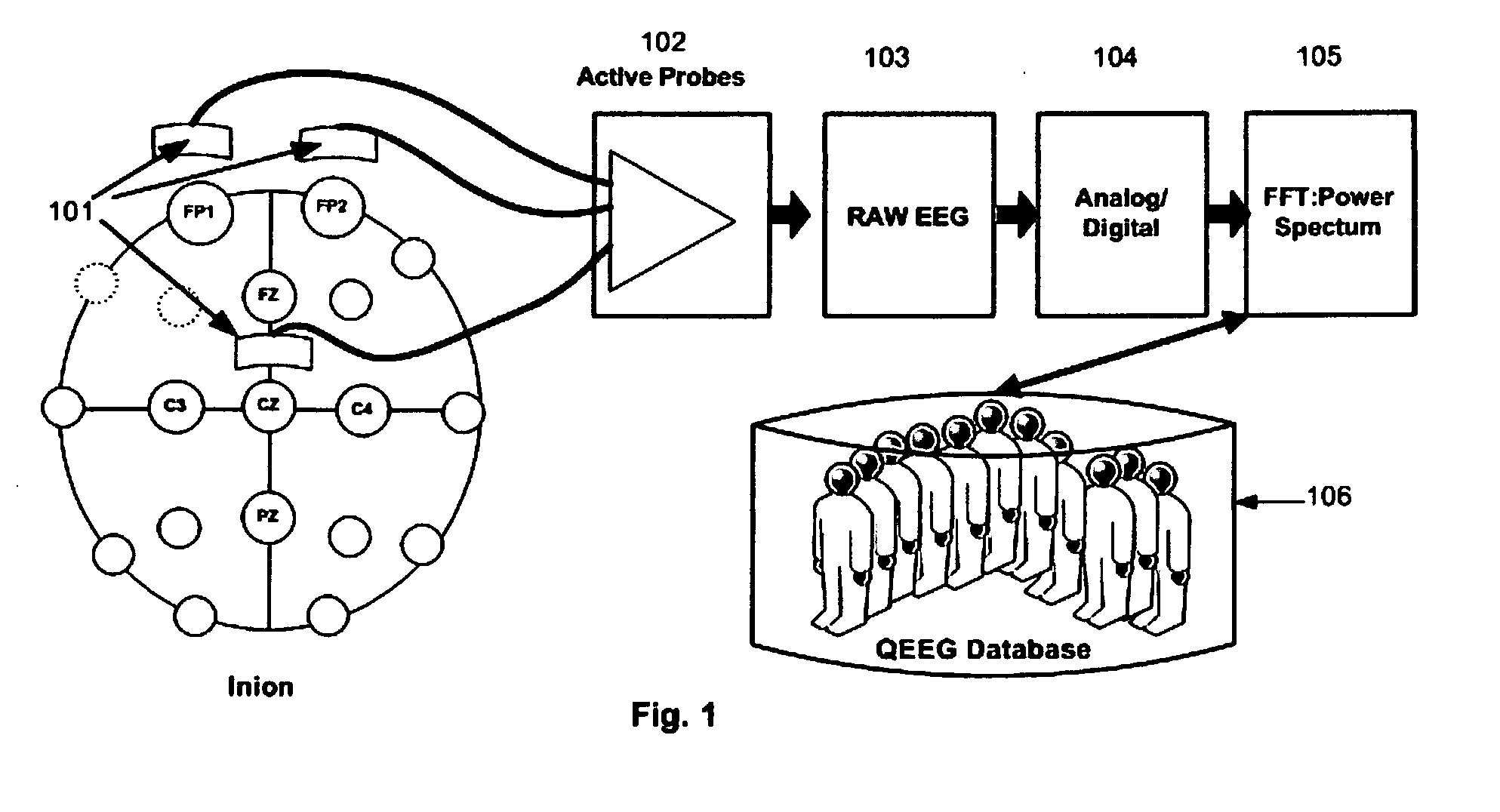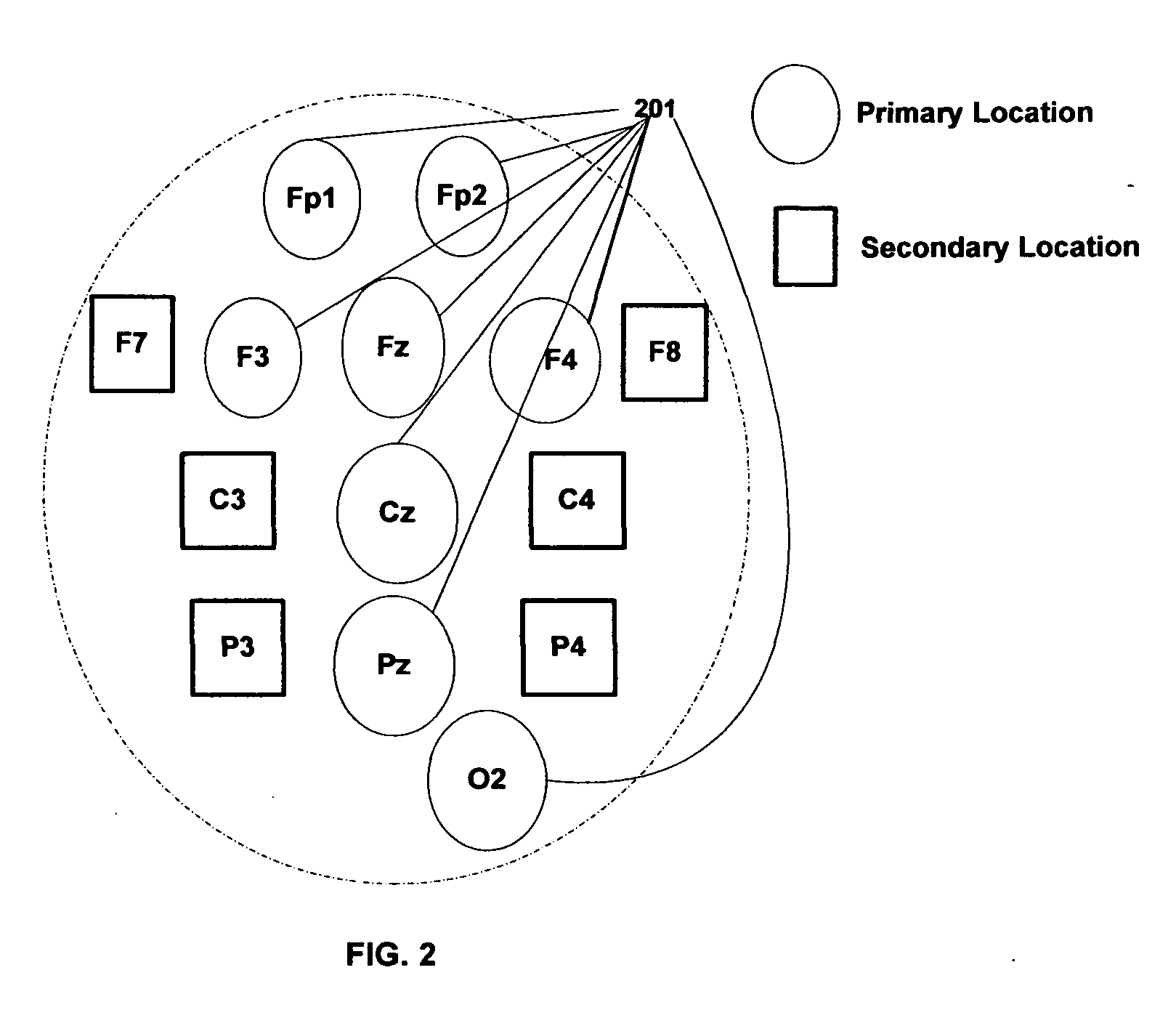Public Health Screening For Cognitive Health Using Dry Sensor Electroencephalogram Technology
a technology of dry sensor and electroencephalogram, which is applied in the direction of instruments, applications, and measurements using nmr, can solve the problems of requiring specialized personnel to administer the test, and not extensive training to ensure clients, and achieves good signal to noise quality and quick and easy attachment to clients.
- Summary
- Abstract
- Description
- Claims
- Application Information
AI Technical Summary
Benefits of technology
Problems solved by technology
Method used
Image
Examples
Embodiment Construction
[0019]The present invention is positioned to collect and analyze electroencephalogram data from subjects using dry electrode sensors. The use of dry electrode sensors provides an easier and faster method for performing a diagnostic EEG than is available with conventional gel / paste type sensors. The invention design requires a calibration of the system before testing, baseline readings of system noise floor and artifact profiling. At acquisition time, the system stores the collected raw EEG data, organizes them into frequency bins and power spectrum tables, compares phase relationships among the signals collected and displays them in topographic fashion. The collected data can then be compared statistically to a normative database, and assigned relative and absolute scores for the purpose of assessing the subject for neurophysiological health, both as a direct measurement and as an adjunct to other methods of screening, such as classical psychometric testing. At the present time ther...
PUM
 Login to View More
Login to View More Abstract
Description
Claims
Application Information
 Login to View More
Login to View More - R&D
- Intellectual Property
- Life Sciences
- Materials
- Tech Scout
- Unparalleled Data Quality
- Higher Quality Content
- 60% Fewer Hallucinations
Browse by: Latest US Patents, China's latest patents, Technical Efficacy Thesaurus, Application Domain, Technology Topic, Popular Technical Reports.
© 2025 PatSnap. All rights reserved.Legal|Privacy policy|Modern Slavery Act Transparency Statement|Sitemap|About US| Contact US: help@patsnap.com



